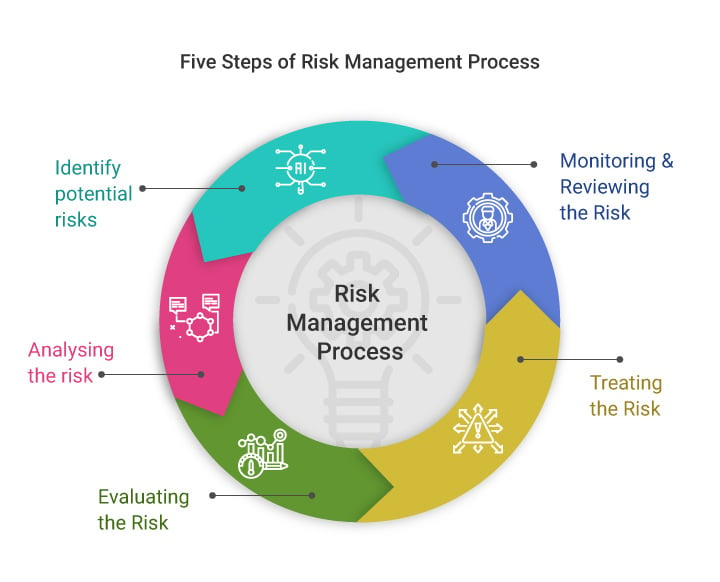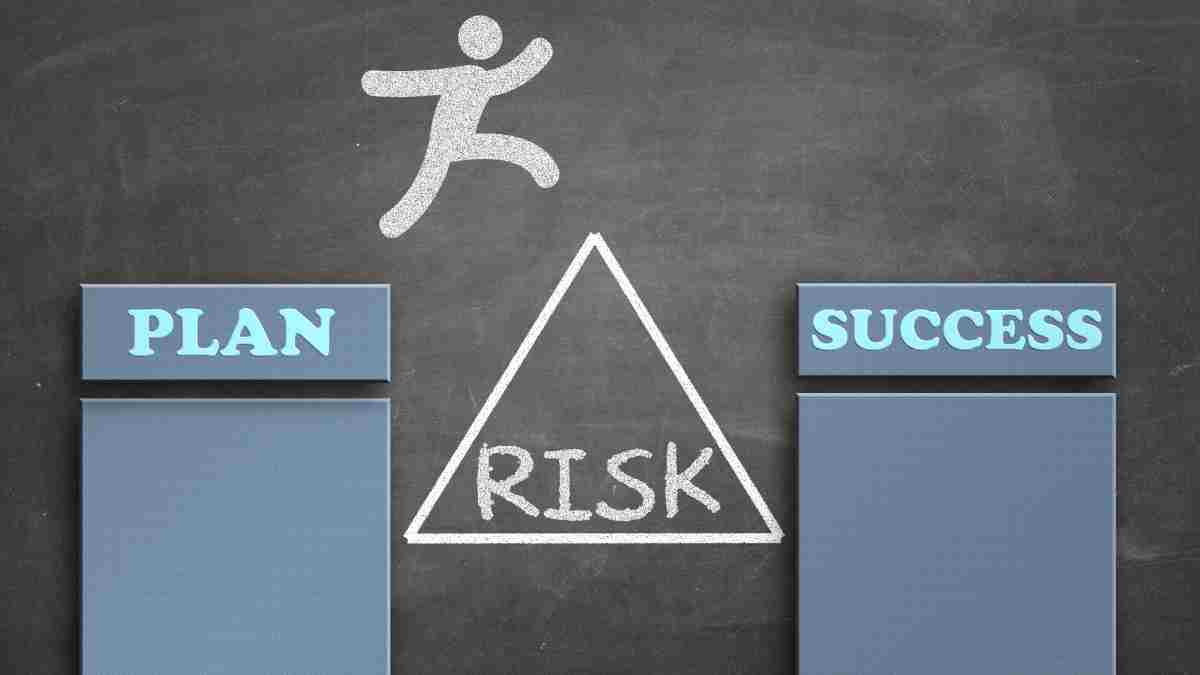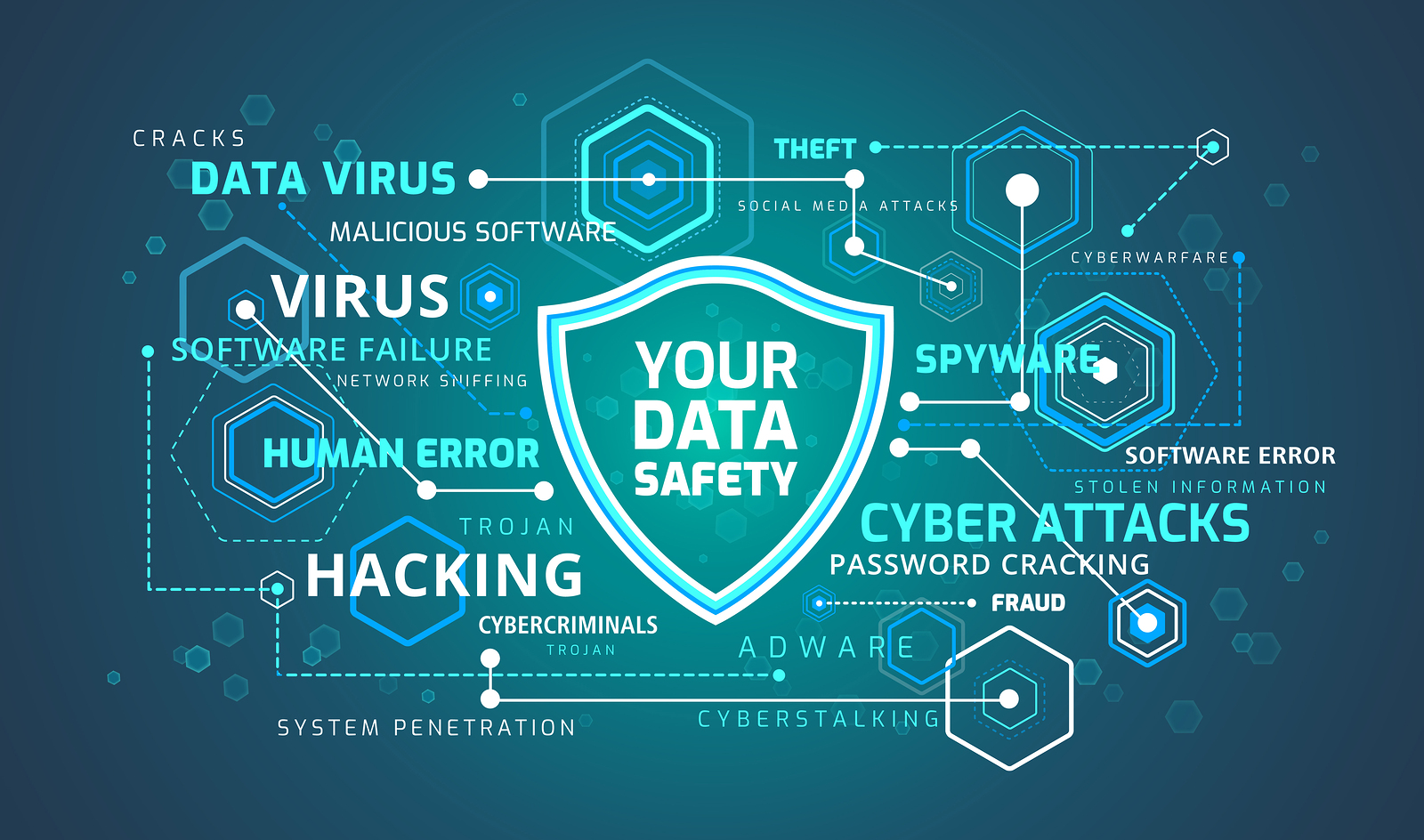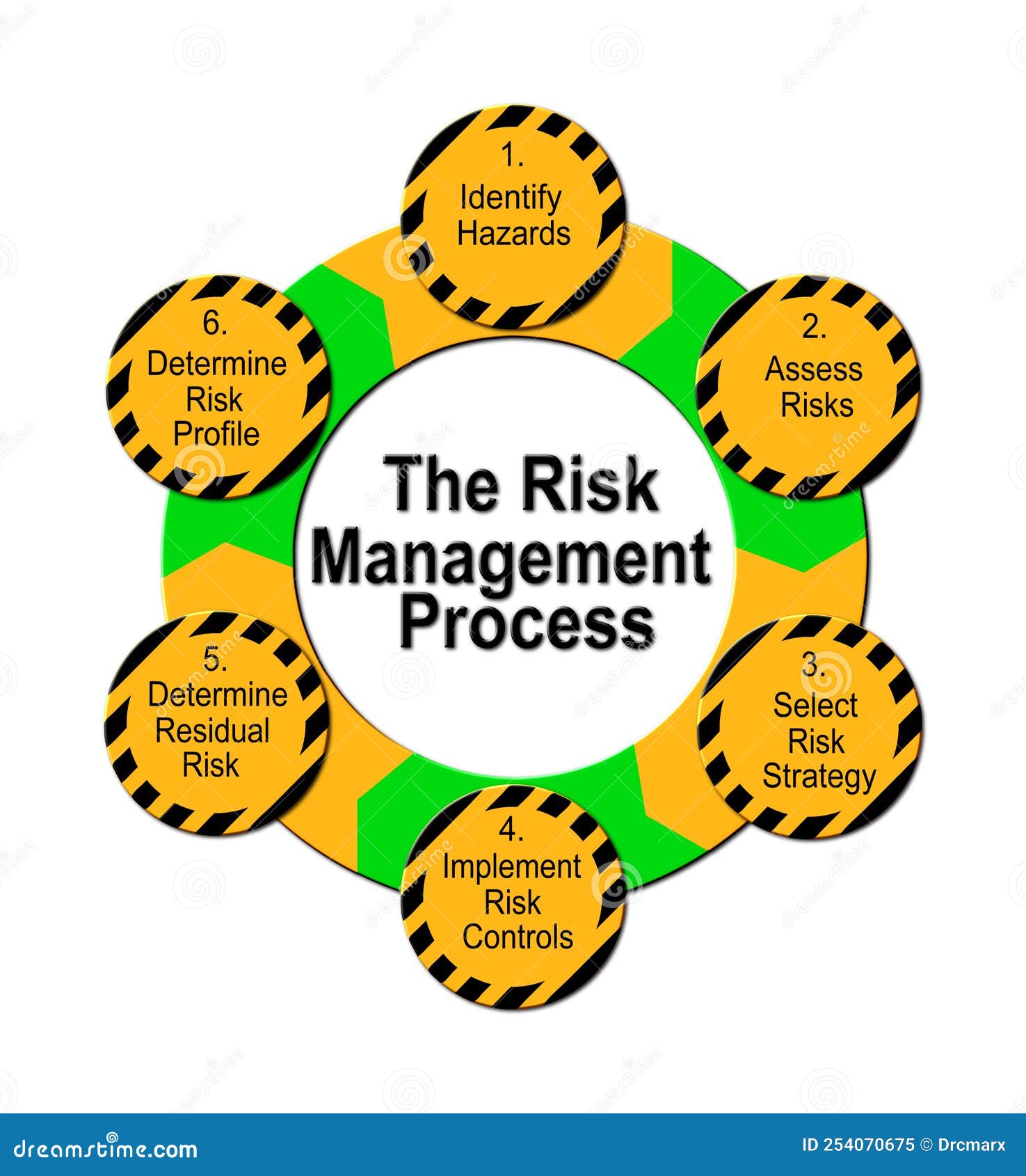Why Entrepreneurs Need a Proactive Approach to Risk Management
Risk management is a crucial aspect of entrepreneurship, as it enables business owners to navigate uncertainty and make informed decisions. Without a proactive approach to risk management, entrepreneurs may face significant consequences, including financial losses, reputational damage, and even business closure. In fact, according to a recent study, 60% of small businesses that experience a cyber attack go out of business within six months. This highlights the importance of risk management for entrepreneurs, as it can mean the difference between success and failure.
Effective risk management involves identifying and assessing potential risks, developing strategies to mitigate or manage those risks, and regularly reviewing and updating the risk management plan. By taking a proactive approach to risk management, entrepreneurs can minimize the likelihood and impact of adverse events, and ensure the long-term sustainability of their business.
Risk management for entrepreneurs is not just about avoiding risks, but also about capitalizing on opportunities. By understanding the potential risks and rewards associated with a particular business decision, entrepreneurs can make informed choices that drive growth and profitability. For example, a business owner may decide to invest in a new market, but only after conducting thorough market research and assessing the potential risks and rewards.
In today’s fast-paced and rapidly changing business environment, risk management is more important than ever. With the rise of digital technologies, cybersecurity risks are becoming increasingly prevalent, and entrepreneurs must be proactive in protecting their businesses from these threats. Similarly, the COVID-19 pandemic has highlighted the importance of risk management in the face of uncertainty and disruption.
By prioritizing risk management, entrepreneurs can build resilience and agility into their businesses, and ensure that they are well-equipped to navigate the challenges and opportunities of the modern business landscape. Whether it’s managing financial risks, mitigating cybersecurity threats, or building a risk-aware culture, effective risk management is essential for entrepreneurs who want to achieve long-term success.
Identifying and Assessing Potential Risks in Your Business
Identifying and assessing potential risks is a critical step in risk management for entrepreneurs. This involves analyzing the business environment, identifying potential risks, and assessing their likelihood and impact. There are several types of risks that businesses may face, including market risks, operational risks, financial risks, and regulatory risks.
Market risks refer to the potential impact of changes in market conditions on the business. This may include changes in demand, competition, or market trends. Operational risks refer to the potential impact of internal processes and systems on the business. This may include risks related to supply chain management, inventory management, and employee management.
Financial risks refer to the potential impact of financial factors on the business. This may include risks related to cash flow management, debt management, and investment risks. Regulatory risks refer to the potential impact of changes in laws and regulations on the business. This may include risks related to compliance with tax laws, employment laws, and environmental laws.
To conduct a risk assessment, entrepreneurs can use a variety of tools and techniques, including risk matrices, decision trees, and sensitivity analysis. A risk matrix is a table that plots the likelihood of a risk against its potential impact. This can help entrepreneurs to identify and prioritize potential risks. A decision tree is a diagram that shows the potential outcomes of different decisions. This can help entrepreneurs to evaluate the potential risks and rewards of different courses of action.
Sensitivity analysis is a technique that involves analyzing how changes in different variables may affect the business. This can help entrepreneurs to identify potential risks and opportunities. For example, an entrepreneur may use sensitivity analysis to evaluate how changes in interest rates may affect the business’s cash flow.
Once potential risks have been identified and assessed, entrepreneurs can develop strategies to mitigate or manage those risks. This may involve avoiding the risk, transferring the risk to another party, mitigating the risk through controls or procedures, or accepting the risk and developing a contingency plan.
For example, an entrepreneur may decide to mitigate the risk of a data breach by implementing robust cybersecurity measures, such as firewalls and encryption. Alternatively, an entrepreneur may decide to transfer the risk of a data breach by purchasing cyber insurance.
By identifying and assessing potential risks, entrepreneurs can develop effective risk management strategies that minimize the likelihood and impact of adverse events. This can help to ensure the long-term sustainability of the business and achieve its goals and objectives.
https://www.youtube.com/watch?v=q4MaAHDrZRY
Developing a Risk Management Plan: Strategies and Best Practices
A risk management plan is a critical component of risk management for entrepreneurs. It outlines the strategies and procedures for identifying, assessing, and mitigating potential risks. A well-developed risk management plan can help entrepreneurs to minimize the likelihood and impact of adverse events, and ensure the long-term sustainability of their business.
There are several key components of a risk management plan, including risk avoidance, risk transfer, risk mitigation, and risk acceptance. Risk avoidance involves eliminating or avoiding potential risks. Risk transfer involves transferring potential risks to another party, such as through insurance or outsourcing. Risk mitigation involves reducing the likelihood or impact of potential risks. Risk acceptance involves accepting potential risks and developing a contingency plan.
Best practices for developing and implementing a risk management plan include establishing a risk management team, regularly reviewing and updating the plan, and providing training and resources to employees. A risk management team can help to identify and assess potential risks, and develop strategies for mitigating those risks. Regular review and update of the plan can help to ensure that it remains effective and relevant.
Providing training and resources to employees can help to ensure that they are aware of potential risks and know how to mitigate them. This can include training on risk management procedures, as well as providing resources such as risk management software and tools.
Another best practice is to establish a risk management framework that outlines the risk management process and procedures. This can include a risk management policy, risk management procedures, and risk management guidelines. A risk management framework can help to ensure that risk management is integrated into all aspects of the business.
In addition, entrepreneurs should regularly review and update their risk management plan to ensure that it remains effective and relevant. This can include identifying new risks, assessing changes in the business environment, and updating risk management strategies.
By developing and implementing a risk management plan, entrepreneurs can minimize the likelihood and impact of adverse events, and ensure the long-term sustainability of their business. A well-developed risk management plan can help entrepreneurs to achieve their goals and objectives, and ensure the success of their business.
Risk management for entrepreneurs is an ongoing process that requires regular review and update. By following best practices and establishing a risk management framework, entrepreneurs can ensure that their business is well-equipped to manage potential risks and achieve long-term success.
How to Manage Financial Risks as an Entrepreneur
Financial risk management is a critical aspect of risk management for entrepreneurs. It involves identifying and mitigating potential financial risks that can impact the business. Financial risks can include cash flow management, debt management, and investment risks.
Cash flow management is essential for entrepreneurs to ensure that the business has sufficient funds to meet its financial obligations. This can be achieved by creating a cash flow forecast, managing accounts receivable and payable, and maintaining a cash reserve.
Debt management is another important aspect of financial risk management. Entrepreneurs should ensure that the business has a manageable debt-to-equity ratio and that debt is used strategically to finance growth. This can be achieved by creating a debt management plan, negotiating with lenders, and exploring alternative financing options.
Investment risks can also impact the business. Entrepreneurs should ensure that investments are made strategically and that the business has a diversified investment portfolio. This can be achieved by conducting thorough research, diversifying investments, and regularly reviewing and updating the investment portfolio.
To create a financial safety net, entrepreneurs can consider setting aside a portion of the business’s profits in a reserve fund. This fund can be used to cover unexpected expenses or financial shortfalls. Additionally, entrepreneurs can consider diversifying their investments to minimize risk.
Managing cash flow is also critical for entrepreneurs. This can be achieved by creating a cash flow forecast, managing accounts receivable and payable, and maintaining a cash reserve. Entrepreneurs should also ensure that the business has a manageable debt-to-equity ratio and that debt is used strategically to finance growth.
By managing financial risks, entrepreneurs can minimize the likelihood and impact of financial losses, and ensure the long-term sustainability of their business. Financial risk management is an ongoing process that requires regular review and update. By following best practices and staying informed, entrepreneurs can ensure that their business is well-equipped to manage financial risks and achieve long-term success.
Risk management for entrepreneurs is not just about managing financial risks, but also about making informed decisions that drive growth and profitability. By understanding financial risks and taking steps to mitigate them, entrepreneurs can achieve their goals and objectives, and ensure the success of their business.
Cybersecurity Risks: Protecting Your Business from Data Breaches and Cyber Attacks
Cybersecurity risk management is a critical aspect of risk management for entrepreneurs. With the increasing reliance on technology and the internet, businesses are more vulnerable to cyber threats than ever before. A data breach or cyber attack can have devastating consequences, including financial losses, reputational damage, and loss of business.
To protect your business from cybersecurity risks, it is essential to implement robust cybersecurity measures. This can include installing firewalls, encrypting sensitive data, and providing employee training on cybersecurity best practices. Additionally, entrepreneurs should regularly review and update their cybersecurity measures to ensure they remain effective and relevant.
One of the most effective ways to protect your business from cybersecurity risks is to implement a cybersecurity framework. A cybersecurity framework is a set of guidelines and best practices that outline how to manage and mitigate cybersecurity risks. This can include identifying potential risks, assessing the likelihood and impact of those risks, and implementing controls to mitigate them.
Another important aspect of cybersecurity risk management is employee training. Employees are often the weakest link in a business’s cybersecurity defenses, and providing them with training on cybersecurity best practices can help to prevent data breaches and cyber attacks. This can include training on how to identify and report suspicious activity, how to use strong passwords, and how to protect sensitive data.
In addition to implementing cybersecurity measures and providing employee training, entrepreneurs should also regularly review and update their cybersecurity measures to ensure they remain effective and relevant. This can include conducting regular risk assessments, updating software and systems, and implementing new controls and procedures.
By implementing robust cybersecurity measures, providing employee training, and regularly reviewing and updating cybersecurity measures, entrepreneurs can protect their business from cybersecurity risks and ensure the long-term sustainability of their business. Cybersecurity risk management is an ongoing process that requires regular attention and effort, but the benefits of protecting your business from cybersecurity risks are well worth the investment.
Risk management for entrepreneurs is not just about managing cybersecurity risks, but also about making informed decisions that drive growth and profitability. By understanding cybersecurity risks and taking steps to mitigate them, entrepreneurs can achieve their goals and objectives, and ensure the success of their business.
Reputation Management: Mitigating the Risks of Social Media and Online Reviews
Reputation management is a critical aspect of risk management for entrepreneurs. With the rise of social media and online reviews, businesses are more vulnerable to reputational damage than ever before. A single negative review or social media post can have devastating consequences, including loss of business and damage to the company’s reputation.
To mitigate the risks of social media and online reviews, entrepreneurs should implement a reputation management strategy. This can include monitoring social media and online reviews, responding to negative feedback, and implementing a crisis management plan. Additionally, entrepreneurs should encourage positive reviews and feedback by providing excellent customer service and incentivizing customers to leave reviews.
Monitoring social media and online reviews is essential for reputation management. This can be done by setting up alerts for mentions of the company’s name, competitors, and industry-related keywords. Entrepreneurs should also regularly review online reviews and respond to negative feedback in a timely and professional manner.
Responding to negative feedback is critical for reputation management. Entrepreneurs should respond promptly and professionally to negative reviews and feedback, and provide a solution to the customer’s problem. This can help to turn a negative experience into a positive one and prevent further reputational damage.
Implementing a crisis management plan is also essential for reputation management. This can include identifying potential risks, developing a response plan, and training employees on how to respond to a crisis. By having a plan in place, entrepreneurs can quickly respond to a crisis and minimize reputational damage.
Encouraging positive reviews and feedback is also important for reputation management. Entrepreneurs should provide excellent customer service and incentivize customers to leave reviews. This can be done by offering discounts or rewards for customers who leave reviews, or by simply providing excellent customer service and encouraging customers to share their positive experiences.
By implementing a reputation management strategy, entrepreneurs can mitigate the risks of social media and online reviews and protect their company’s reputation. Reputation management is an ongoing process that requires regular attention and effort, but the benefits of protecting the company’s reputation are well worth the investment.
Risk management for entrepreneurs is not just about managing reputational risks, but also about making informed decisions that drive growth and profitability. By understanding reputational risks and taking steps to mitigate them, entrepreneurs can achieve their goals and objectives, and ensure the success of their business.
Building a Risk-Aware Culture: Engaging Employees in Risk Management
Building a risk-aware culture is essential for effective risk management for entrepreneurs. A risk-aware culture encourages employees to identify and report potential risks, and to take ownership of risk management. This can help to prevent risks from materializing, and to minimize the impact of risks that do occur.
To build a risk-aware culture, entrepreneurs should engage employees in risk management. This can be done by providing training on risk management, encouraging employees to report potential risks, and recognizing and rewarding employees who identify and mitigate risks.
Providing training on risk management is critical for building a risk-aware culture. This can include training on risk identification, risk assessment, and risk mitigation. Entrepreneurs should also provide training on the company’s risk management policies and procedures, and ensure that employees understand their roles and responsibilities in risk management.
Encouraging employees to report potential risks is also important for building a risk-aware culture. This can be done by creating a culture of transparency and accountability, where employees feel comfortable reporting potential risks without fear of reprisal. Entrepreneurs should also recognize and reward employees who identify and mitigate risks, to encourage employee participation in risk management.
Recognizing and rewarding employees who identify and mitigate risks can help to encourage employee participation in risk management. This can be done by providing incentives, such as bonuses or promotions, for employees who identify and mitigate risks. Entrepreneurs should also recognize and reward employees who report potential risks, to encourage a culture of transparency and accountability.
By building a risk-aware culture, entrepreneurs can encourage employees to identify and report potential risks, and to take ownership of risk management. This can help to prevent risks from materializing, and to minimize the impact of risks that do occur. A risk-aware culture is essential for effective risk management for entrepreneurs, and can help to ensure the long-term sustainability of the business.
Risk management for entrepreneurs is not just about identifying and mitigating risks, but also about creating a culture of risk awareness and accountability. By engaging employees in risk management, entrepreneurs can build a risk-aware culture that encourages employees to identify and report potential risks, and to take ownership of risk management.
Reviewing and Updating Your Risk Management Plan: A Continuous Process
Reviewing and updating a risk management plan is a continuous process that is essential for effective risk management for entrepreneurs. A risk management plan is not a one-time task, but rather an ongoing process that requires regular review and update to ensure it remains effective and relevant.
To review and update a risk management plan, entrepreneurs should identify new risks, assess changes in the business environment, and update risk management strategies. This can include reviewing the company’s risk management policies and procedures, assessing the effectiveness of risk management strategies, and identifying new risks that may have arisen since the last review.
Identifying new risks is critical for effective risk management. This can include reviewing industry trends, assessing changes in the business environment, and identifying new risks that may have arisen since the last review. Entrepreneurs should also assess the likelihood and impact of new risks, and update risk management strategies accordingly.
Assessing changes in the business environment is also important for effective risk management. This can include reviewing changes in the market, assessing changes in customer needs and preferences, and identifying new risks that may have arisen since the last review. Entrepreneurs should also update risk management strategies to reflect changes in the business environment.
Updating risk management strategies is critical for effective risk management. This can include reviewing and updating risk management policies and procedures, assessing the effectiveness of risk management strategies, and identifying new risks that may have arisen since the last review. Entrepreneurs should also update risk management strategies to reflect changes in the business environment.
By regularly reviewing and updating a risk management plan, entrepreneurs can ensure that it remains effective and relevant. This can help to prevent risks from materializing, and to minimize the impact of risks that do occur. A risk management plan is not a one-time task, but rather an ongoing process that requires regular review and update.
Risk management for entrepreneurs is not just about identifying and mitigating risks, but also about creating a culture of risk awareness and accountability. By regularly reviewing and updating a risk management plan, entrepreneurs can ensure that their business remains resilient and adaptable in the face of uncertainty.







